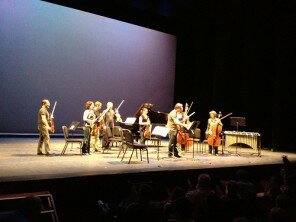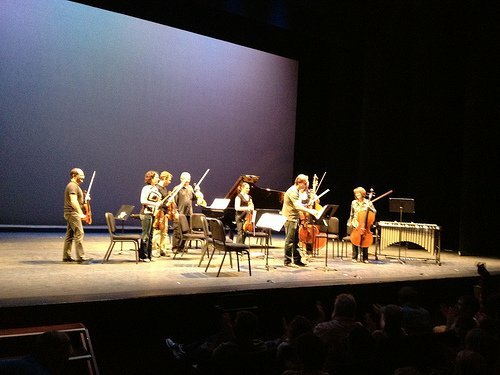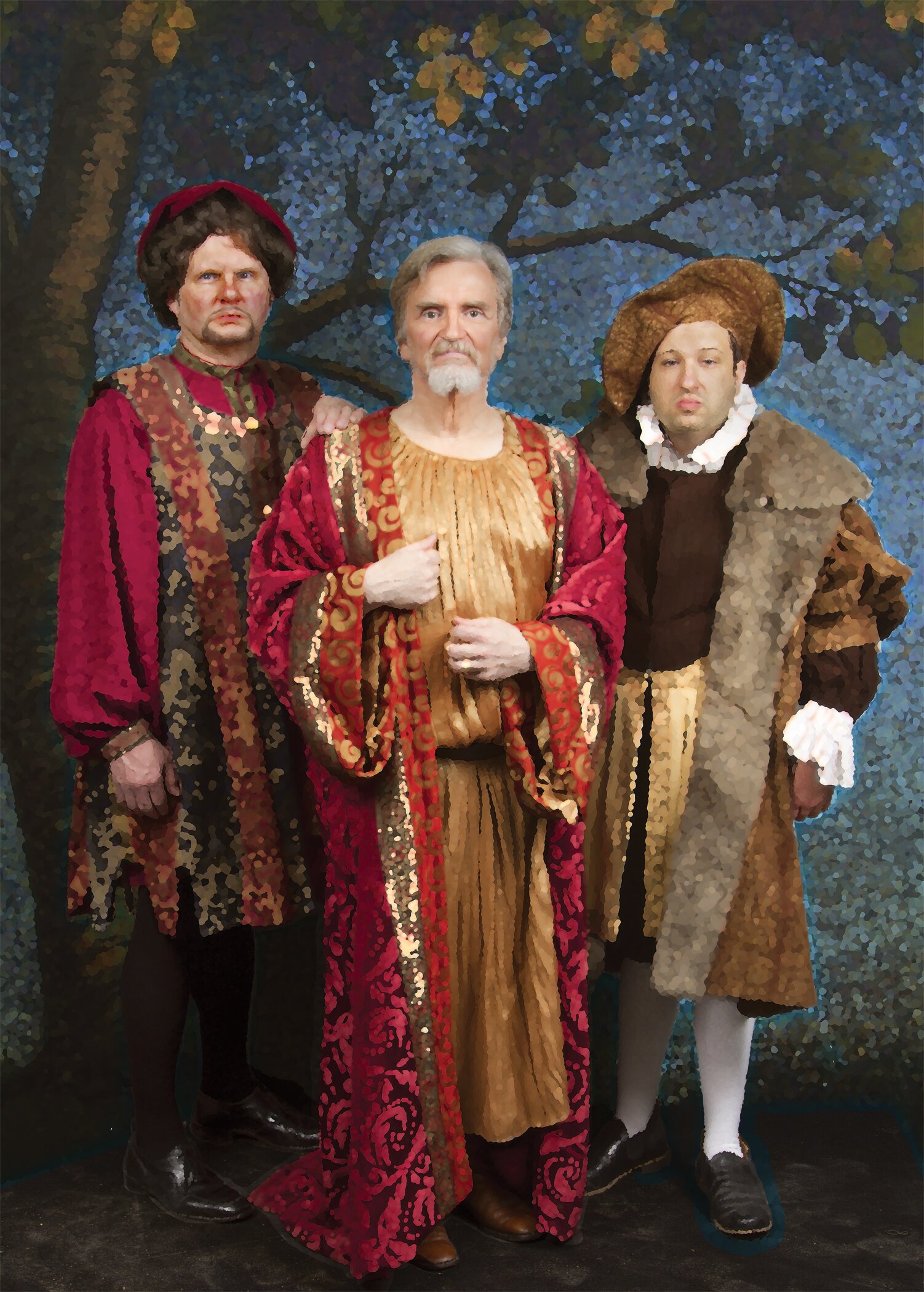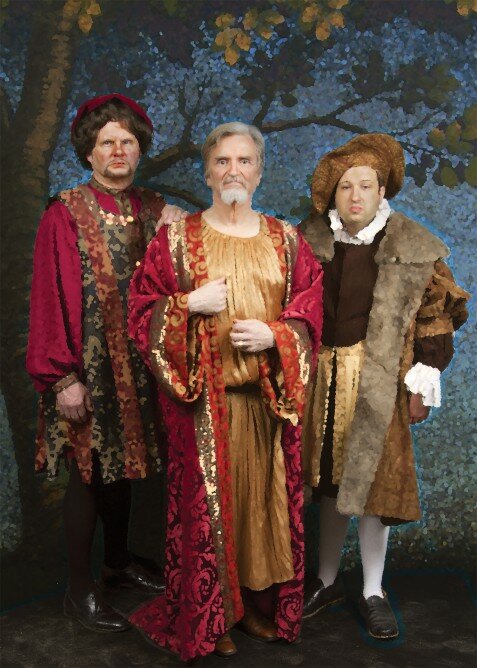Classical music fans now have a Bumbershoot event of their very own, thanks to a partnership with the Seattle Symphony. This is the second year that the Symphony has presented an event at Seattle’s largest arts festival. Last year’s “Symphony Untuxed” recital brought members of the Symphony to Bumbershoot for a fun and light-hearted program of chamber music and solo pieces. The concert was so popular that Bumbershoot decided to bring it back this year. After a dearth of classical music events at Bumbershoot in recent years, it’s encouraging to see the festival reaching out to Seattle’s vibrant classical music community.

This year’s “Symphony Untuxed” was one of the first events of the afternoon on Sunday, the second day of the festival. Despite the early hour and gorgeous weather, a diverse crowd filled the Bagley Wright Theatre for the performance. The Symphony’s new Assistant Conductor Stilian Kirov served as MC for the concert. Although it was only his second day on the job, Kirov’s enthusiasm was apparent in his sense of humor and interactions with the audience. If this is any indication, he’ll get along well with Music Director Ludovic Morlot, whose seemingly boundless energy is bringing many transformative changes to the Symphony.
True to its name, the performers in “Symphony Untuxed” eschewed typical concert formalwear in favor of casual summer clothing. A safari hat made the rounds from performer to performer throughout the concert. Oboist Ben Hausmann represented Seattle well, performing a J.S. Bach oboe concerto while wearing a pair of trail running shoes — the kind that look like toe socks, with individual pockets for each toe. It’s likely that this marks the first time in history that an oboist has performed a Bach concerto while wearing footwear made by Vibram FiveFingers. (Perhaps a sponsorship is in order?)
The program began with Timeless, a contemporary work for piccolo and piano by Ken Benshoof. Seattle Symphony flutist and piccolo player Zartouhi Dombourian-Eby was joined onstage by the composer, who accompanied her on the piano. Benshoof explained that the work was commissioned in 1999 by a friend who wanted a romantic piece to present to his wife as an anniversary gift. Based on the melody of George Gershwin’s beloved song “Embraceable You”, the work interlaces Gershwin’s tune with charming harmonies and a slightly “crooked” waltz interlude.
From there, the program wound its way through centuries and continents. Big-name favorites like J.S. Bach and Shostakovich were well-represented, but there was also a refreshing emphasis on living composers and new music. Particularly enjoyable was Flowering Jasmine, a concerto for violin, vibraphone, and strings by Latvian composer Georgs Pelēcis.
Violinist Mikhail Shmidt’s performance of Michel van der Aa’s Memo — a piece written for violin and portable cassette recorder — was a pleasant surprise. Born in the Netherlands, Van der Aa is known for his innovative, experimental works that often blend technology and multimedia with traditional elements of classical music. In Memo, the violinist must play passages in the score while simultaneously recording and rewinding the tape recorder. The result is layered blend of sounds that becomes increasingly jumbled and complex before dwindling to nothingness.
The recital concluded with a rousing performance of two tango pieces by the great Argentinian composer Ástor Piazzolla, Fuga y Misterio and Primavera Porteña (Buenos Aires Spring). Primavera Porteña was an apt choice to conclude such a diverse program. It’s from Piazzolla’s suite Estaciones Porteñas (The Four Seasons of Buenos Aires), which is a tango-infused nod to the Baroque Era and Vivaldi’s Four Seasons. Violinist Artur Girsky gave a fiery performance as soloist.
The informal, relaxed atmosphere of the performances was fun and engaging. Despite the length of the concert (nearly ninety minutes of music with no intermission), the vast majority of the audience stayed until the end of the show to give the musicians a standing ovation. The only aspect of the concert that was less than stellar was the fact that the stage was not reset between pieces, leaving performers stranded without chairs and stands in the proper configuration.
If the popularity of this year’s “Symphony Untuxed” is any indication, the event will be back at next year’s Bumbershoot. Let’s hope that this collaboration between the Seattle Symphony and the city’s largest arts festival opens the doors for a larger classical music presence at Bumbershoot in years to come.


